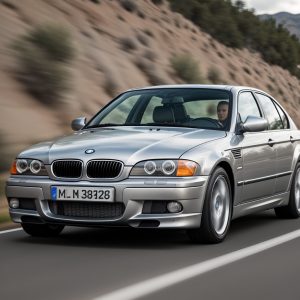Understanding your bmw’s winter performance
Driving a BMW is a thrilling experience, but when winter arrives with its icy roads and heavy snowfall, mastering the art of handling your luxury vehicle becomes essential for both safety and enjoyment.
Before hitting the snowy roads, it’s crucial to understand how your BMW behaves in winter conditions. Despite its reputation for sportiness and performance, a BMW can react differently when faced with snow and ice compared to dry pavement.
Prepare your bmw for winter
Prior to venturing out into snowy conditions, ensure your BMW is properly prepared. Start by equipping it with winter tires designed to provide optimal traction in snow and ice. Winter tires are engineered with special rubber compounds and tread patterns that enhance grip and stability on slippery surfaces.
Additionally, check that your BMW’s fluids are topped up, including antifreeze and windshield washer fluid. Cold temperatures can cause fluids to thicken or freeze, potentially leading to mechanical issues or impaired visibility.
Adjust your driving technique
When driving your BMW in snow, adopting the right technique is crucial for maintaining control and reducing the risk of accidents. Begin by accelerating gently and gradually to prevent wheel spin, as sudden bursts of throttle can cause your tires to lose traction.
Similarly, brake smoothly and early to avoid skidding. BMWs are equipped with advanced braking systems, but in slippery conditions, it’s best to apply gentle pressure to the brake pedal to allow for gradual deceleration.
Utilize your bmw’s advanced driving features
Modern BMW vehicles come equipped with a range of advanced driving features designed to enhance safety and performance, especially in challenging conditions like snow. Features such as Dynamic Stability Control (DSC) and traction control systems can help mitigate wheel slip and maintain stability when driving on slippery surfaces.
Familiarize yourself with these features and learn how to effectively utilize them to optimize your BMW’s performance in winter weather.
Practice defensive driving
Even with the most advanced technology and optimal driving techniques, winter conditions can still present unexpected challenges. That’s why practicing defensive driving is essential for staying safe on snowy roads.
Keep a safe distance from other vehicles, anticipate changes in road conditions, and remain vigilant at all times. By staying focused and prepared, you can react quickly to any potential hazards and navigate your BMW safely through snow and ice.
Maintain your bmw’s exterior and interior
In addition to driving considerations, it’s important to maintain your BMW’s exterior and interior during the winter months. Regularly wash off road salt and debris to prevent corrosion, and apply a protective wax coating to safeguard the paint finish.
Inside the cabin, use all-weather floor mats to protect against moisture and salt stains, and consider investing in a set of winter tires.
Conclusion: enjoy the journey safely
Driving a BMW in snow can be an exhilarating experience, but it requires careful preparation, technique, and awareness. By understanding your BMW’s winter performance, adjusting your driving technique, utilizing advanced features, practicing defensive driving, and maintaining your vehicle, you can confidently navigate snowy roads and enjoy the journey safely.
Remember, it’s not just about reaching your destination—it’s about enjoying the drive along the way.




